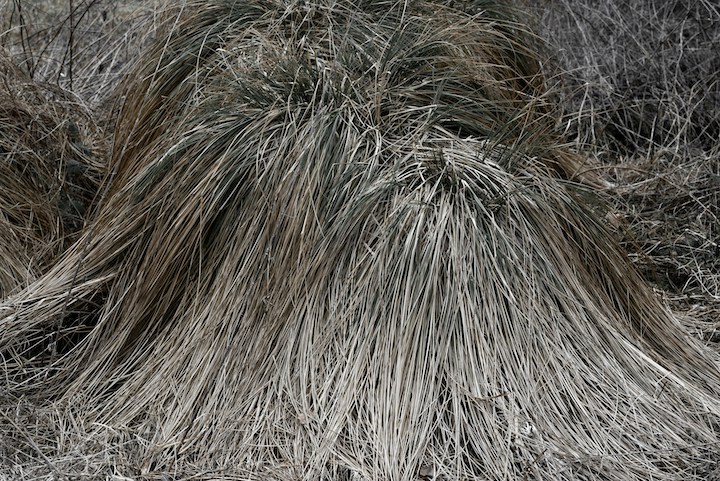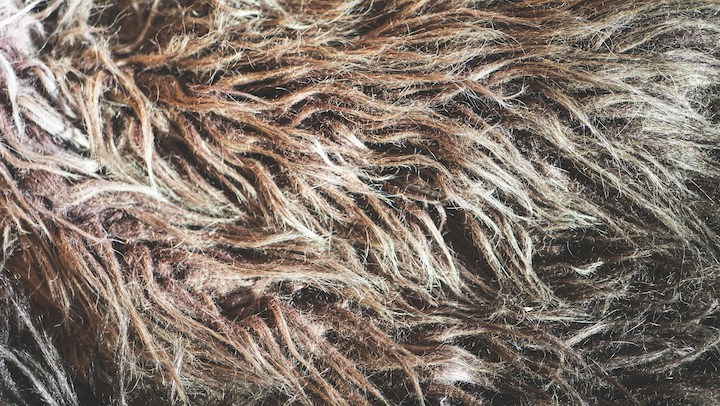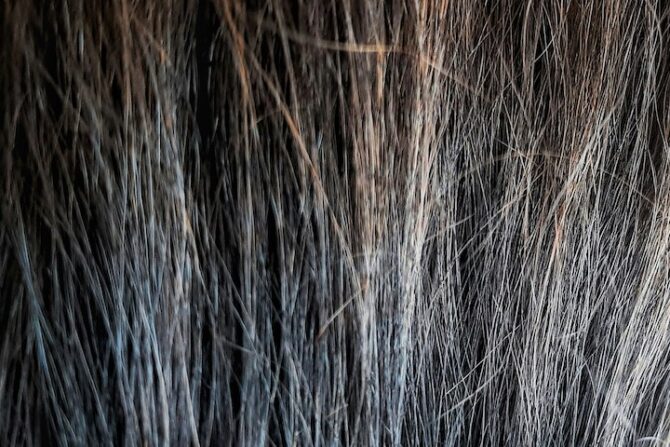Have you ever spent money on a new hair product—maybe something that promised deep moisture—and then wondered why it didn’t work at all for your hair? Or maybe your friend swears by a conditioner, but when you try it, your hair feels greasy or dry. I’ve been there. And the reason might be something you probably haven’t thought much about yet: your hair’s porosity.
You don’t need fancy gadgets or a salon visit to figure it out. All you need is a few simple tools you already have at home—and a little curiosity.
Today, I’ll walk you through different hair porosity test methods, explain what each one tells you, and help you figure out exactly what your hair’s been trying to tell you all along.
Let’s get into it.
Table of Contents
Key Takeaways
- Hair porosity tells you how your hair handles moisture.
- The three types are low, medium, and high porosity.
- You can test porosity at home using easy methods like the float test, slip test, and spray bottle.
- Combine different tests for clearer answers.
- Once you know your porosity, you can stop guessing what your hair needs.
What Hair Porosity Really Means
Okay, let’s start from the top—what even is hair porosity?
Hair porosity is just a way of describing how easily your hair absorbs and holds onto moisture. Think of your hair strands like tiny sponges. Some sponges soak up water quickly. Others barely take in any. And some hold just the right amount.
There are three general levels of porosity:
- Low porosity: Your hair cuticles are tightly closed. It takes a while for water or products to sink in.
- Medium porosity: This is the sweet spot. Your hair holds moisture well and absorbs products evenly.
- High porosity: Your hair cuticles are lifted or damaged, so moisture goes in fast—but it also escapes quickly.
Knowing where your hair falls can help you choose the right products and routine. Without this, you’re just guessing.

Why You Need to Know Your Hair’s Porosity
You might be wondering—why does this matter so much?
Well, let me put it this way: You wouldn’t use a heavy winter moisturizer on oily skin in the middle of summer, right? Same goes for hair. What works for someone else might not work for you because your hair behaves differently.
If your hair takes forever to dry, that might be low porosity. If it frizzes in seconds after leaving the shower, that could be high porosity. The more you know, the better choices you’ll make.
I’ve had moments where I felt like my leave-in conditioner was just sitting on top of my hair. Turns out, my hair was low porosity, and it needed some help to absorb anything. Once I knew that, everything changed.
So let’s get into the ways you can figure this out for yourself—right from home.
Also Read: Best Color-Preserving Hair Treatments That Actually Work
The Float Test (Most Popular One)
This is the go-to for most people, and I get why—it’s simple and kind of fun.
What You’ll Need:
- A clean glass of room-temperature water
- A few clean strands of your shed hair (not pulled out—shed from brushing is fine)
How To Do It:
- 1. Make sure your hair is clean and product-free. If there’s any oil, cream, or conditioner left, the results won’t be accurate.
- 2. Drop a strand into the glass of water.
- 3. Wait for about 3 to 5 minutes.
- 4. Watch what the strand does.
How To Read It:
- If your hair floats on top, you likely have low porosity hair.
- If it sinks slowly to the middle, you probably have medium porosity.
- If it drops straight to the bottom, that points to high porosity.
A Quick Tip:
If you’ve used a lot of product recently, even after shampooing, you might still have buildup. That buildup can make your hair float when it normally wouldn’t. So it’s best to do this test after a good clarifying wash.
The Slip ‘n’ Slide Test
This one’s more about how your hair feels. It’s a good one if you’re in a hurry or don’t want to mess with water.
How To Do It:
- 1. Take a single strand of dry, clean hair.
- 2. Pinch it between your thumb and index finger.
- 3. Slowly slide your fingers up the strand, from the tip toward the root.
What You’re Feeling For:
- If it feels smooth all the way, your cuticle is likely flat = low porosity.
- If you feel some bumps or roughness, that’s usually high porosity.
- If there’s a little texture but not much, that’s probably medium porosity.
This test isn’t always exact, but it’s helpful when combined with the others.
The Spray Bottle Test
This one gives you an instant visual result.
What You’ll Need:
- A spray bottle filled with water
- Dry, clean hair
How To Do It:
- 1. Spray a small section of your hair—maybe your forearm’s width worth.
- 2. Watch what the water does.
What To Look For:
- If the water just sits on your hair and beads up, it means the moisture isn’t getting in easily. That’s a sign of low porosity.
- If it absorbs right away, your hair might be high porosity—or at least very thirsty.
- If it takes in the water slowly but evenly, that’s medium porosity.
What I like about this one is that it mimics what happens in real life—like on wash day when you’re trying to get your hair fully wet.

The Stretch Test (Bonus Clue)
This one isn’t a porosity test by itself, but it gives you a little more info about how your hair behaves.
How To Do It:
- 1. Take a single strand of hair.
- 2. Stretch it gently between your fingers.
What To Notice:
- If it stretches a little and then returns to normal, that’s healthy behavior.
- If it snaps quickly, your hair might be too dry or too porous.
- If it stretches a lot before breaking, that’s often a sign of high porosity or damage.
Again, this one works best when you combine it with the other methods.
Check Out: Hair Growth Supplements – What You Need to Know Before You Swallow One More Pill
How to Confirm Your Results
One test is helpful. But if you really want clarity, try two or three methods and compare.
Your float test might say one thing, but the spray bottle test might tell you more about your hair’s behavior during styling.
Also, just watch your hair in daily life:
- Does it take forever to get wet? That’s probably low porosity.
- Does it dry fast but feel dry again within hours? That’s likely high porosity.
- Does it seem to behave evenly without much fuss? That’s probably medium.
Write these things down. Over a week or two, patterns start to show.
Now That You Know—What’s Next?
So you’ve tested. You’ve observed. You’ve confirmed. Now, what do you do with this info?
Here’s a simple breakdown:
If you have low porosity hair:
- Use light, watery leave-ins instead of heavy creams.
- Apply products to damp, warm hair to help the cuticle open up.
- Try steaming or using a warm towel to boost absorption.
- Avoid protein-heavy products too often—they can sit on the surface.
If you have medium porosity hair:
- Lucky you. Stick to a balanced routine.
- Use moisturizing shampoos and conditioners, but don’t overdo it.
- You don’t need too much heat or sealing—your hair naturally handles moisture well.
If you have high porosity hair:
- Moisture goes in fast and escapes just as fast.
- Use heavier butters and oils to seal in moisture.
- Protein treatments can help fill in gaps in your hair’s surface.
- Avoid too much heat, bleach, or brushing—those can lift the cuticle even more.
Just knowing what to use and how often makes everything easier. It’s like your hair finally has a manual.

Conclusion
So there you have it. Figuring out your hair porosity doesn’t need to be confusing or complicated. It’s really just about paying attention. Trying a few simple tests. Watching how your hair responds.
Once you know where your hair stands, everything changes. You stop wasting money on things that don’t work. You stop wondering why your styles don’t last. You start caring for your hair the way it needs to be cared for—not how someone else does theirs.
Take ten minutes this week. Try one or two tests. You might be surprised at what your hair is trying to tell you.
Frequently Asked Questions
Can I test my hair porosity if I have product in my hair?
Nope. Product buildup changes how your hair behaves in water. Always test with clean, product-free hair.
How often should I test my hair porosity?
Only once—unless something drastic happens, like bleaching or serious heat damage.
Can my hair have more than one porosity level?
Yes. The hair near your crown might be different from the ends or edges. It’s normal.
Is porosity more important than hair type?
In many ways, yes. Curl pattern tells you what your hair looks like. Porosity tells you how it behaves—especially when it comes to moisture.



